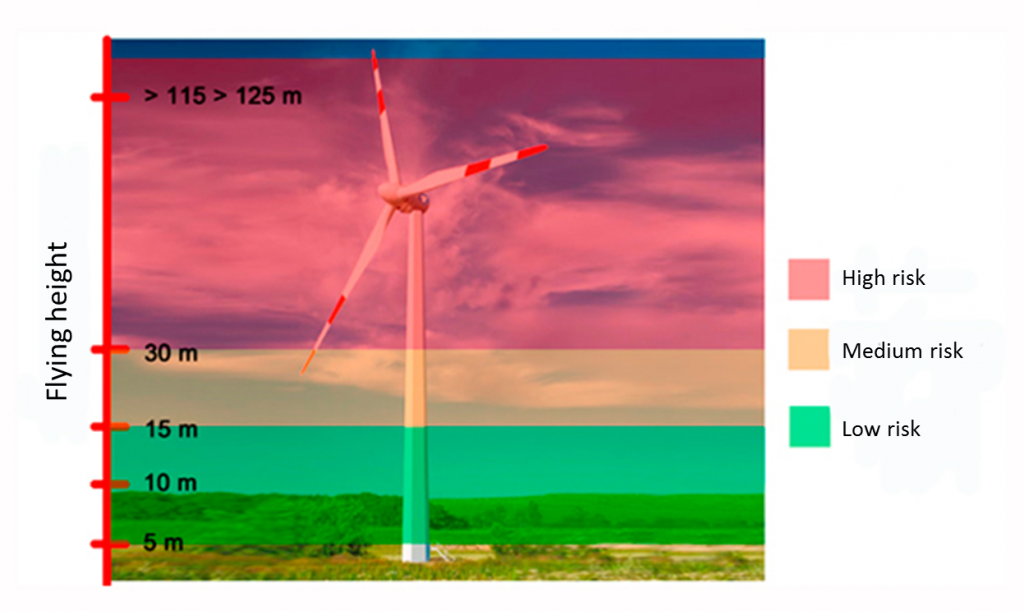Green or clean energy has been a widespread topic for quite a while now, along with its environment friendliness and benefits. It is defined as follows in the blog erenobable.com:
Clean energy is an energy production system free of any contamination, or the procedures used to discard hazardous waste. Consequently, clean energy does not generate waste.
However, waste generation is only a facet of the environmental impact of any energy source (from the construction and operational point of view). As we have mentioned in previous articles, any activity generates a global environmental impact; and all project-specific actions lead to specific impact depending on the ecosystem’s affected environmental factors.
As such, even if there is no contamination caused by waste or emissions, there is environmental impact that affects the environment where the project is to be implemented. For example, a wind farm generates power from the wind. To this end, it is necessary to install huge wind turbines that convert the wind’s kinetic energy into electrical power by means of an alternator. The energy is then transmitted to substations through terrestrial channels.

The landscape
When these wind farms are installed it is necessary to submit a document that describes the possible environmental impact of their construction, operation and disassembly. One of the most significant effects is the impact on the landscape since new visible structures will be introduced. This type of impact is extremely controversial since its assessment is purely subjective: there is no quantitative method for assessing its actual order of magnitude given that it involves personal esthetic considerations. Some people may consider these devices attractive whereas others dislike having wind turbines spoiling the scenery. It should be noted that the impact on the landscape is hard to mitigate – there are no measures that can fully conceal the introduction of foreign devices into the landscape albeit the impact can be architectonically reduced in some cases.
The fauna
Another significant effect of the installation of wind farms consists of the death of birds due to crashes against the systems. This affects both local birds and birds that use air streams to reduce the effort involved in migrating. In the latter case, wind turbines are strategically placed on these routes since the winds are stronger and more constant there. As a result, they pose a hazard during the migratory season of some species. According to the Spanish Ornithology Society (SEO/BirdLife, 2011), a wind farm can cause up to eight million bird and bat casualties every year (during its early years) due to crashes only. At all events, birds that fly higher, such as birds of prey and scavenging birds, are the most vulnerable to this type of impact (see Image 2).

In these cases, mitigating measures aim to reduce the number of annual crashes since the impact by species is inversely proportional to the number of individuals (the lower the number of individuals, the higher the impact). However, birds are not the only victims of wind turbines. Insects are also affected by this technology: they are attracted to the white color of these structures and both insects and smaller birds and animals that feed on them fall victim to wind turbines. If a large number of individuals of the same species is in the same location, they become more vulnerable to predators and, as a consequence, their population drops. Even though many consultants do not consider insect populations as an environmental factor which may be affected, there may be a larger consequence: small birds that feed on insects fly in flocks and this attracts large birds that fly at higher heights. The result is a chain of potential victims.
Lastly, even though clean or green energy does not generate emissions and uses energy from natural sources to convert it into useful energy, it does have disadvantages in terms of other environmental factors. The emission of contaminants mainly affects the water and air. However, clean energy skips these factors and affects second-degree factors such as the local fauna and flora. Nevertheless, it should be stressed that good planning and the execution of effective mitigating measures would reduce these potential damages significantly and result in greater net benefits since the emission of contaminants also leads to many casualties among the local flora and fauna due to poisoning or asphyxiation. The best type of energy generates as many effects that allow for mitigation as possible.
Nestor Javier Flores Ramírez B.Eng.
Consultant
Bibliography
- Atienza, J.C., I. Martín Fierro, O. Infante, J.Valls and J. Domínguez. 2011. Directrices para la evaluación del impacto de los parques eólicos en aves y murciélagos (version 3.0). SEO/BirdLife, Madrid
Comments on this publication